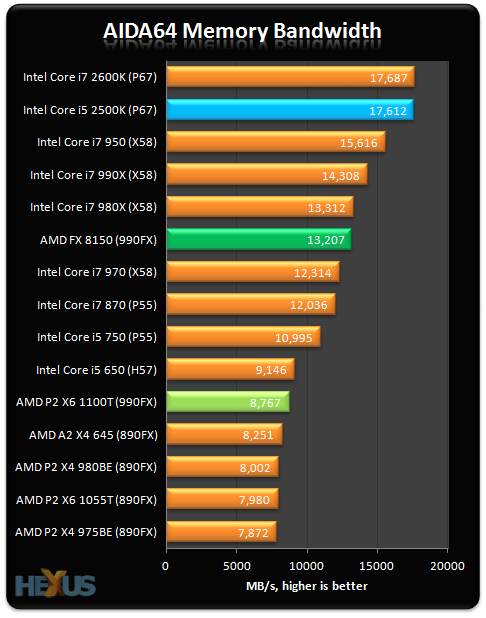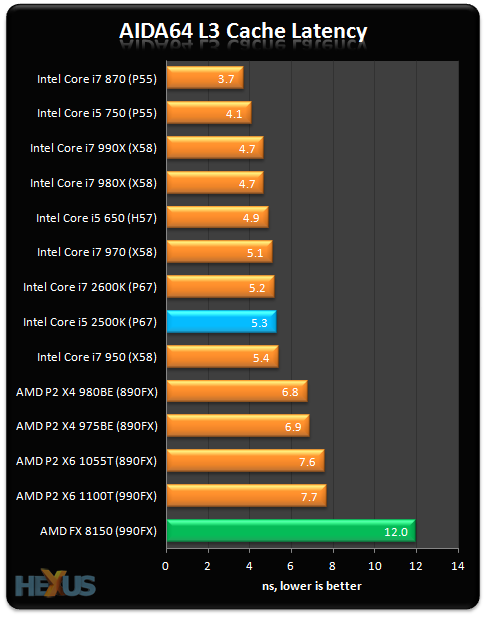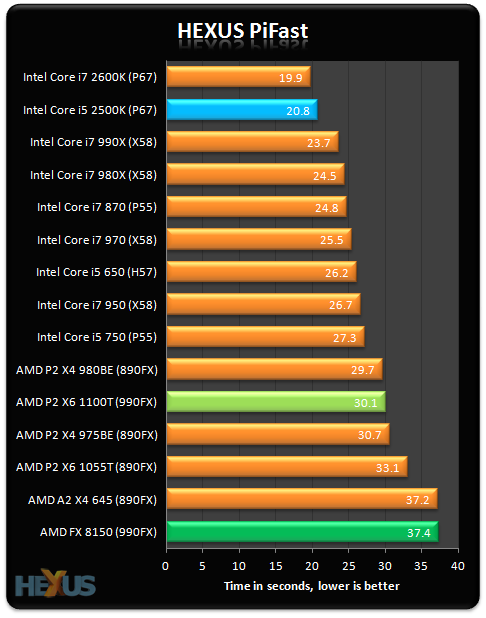Light-load tests

A significant boost in supposed memory bandwidth has more to do with core reorganisation and prefetching, one would assume.

We've updated the AIDA64 benchmark to enable the FX chip return a figure. While obviously included here, take it with a pinch of salt.

OK, surely Sandhu's mislabelled the graphs. The FX-8150 cannot be this slow, right? Think back to how the FX chip works and the single-threaded result becomes more understandable.
The FX's reduction in ALU/AGU units and longer pipeline, together with the clunky code used in the benchmark, are noisome enough to counteract the high clockspeed present on the FX-8150 part. Serial thread processing isn't hot on Bulldozer, evidently, unless it can apply some tasty ISA magic on it.
Indeed, the FX is beaten by a significantly cheaper X4 645 processor, and after speaking with AMD, it seems as if the HEXUS.PiFast application runs abnormally slow on the new architecture. But we've been using the very same test for almost a decade (therein may lie the problem) and, believe it or not, the FX-8150 isn't that much faster than an Athlon 64 3500+.

But it fights back in the lightly-threaded encoding test, closing in on the slower-clocked X6 1100T. Intel's Core i5 2500K and Core i7 2600K chips have long-since disappeared off into the distance.
We can deduce that Bulldozer-based processors have in older benchmarks a lower instructions-per-clock-cycle throughput than Thubans - markedly so in some cases.









